X

Are you curious about how to recover deleted pages in WordPress? Plus, would you like to retrieve permanently deleted WordPress pages and posts via backups? Not a problem! Read on! You’re certainly in the right post.
There is no doubt that we have accidentally deleted a few posts from our WordPress pages, and blogs. Perhaps you have also accidentally deleted something you shouldn’t have. So now you’re wondering how to get the content back?
We’ve already dealt with this issue! Here are the different methods to restore deleted pages in WordPress. You can even recover permanently deleted content!
Let’s get started!
Table of Contents
WordPress allows you to recover deleted pages and posts in several ways. In this post, we’ll take a look at 4 different ways to recover deleted WordPress blog pages and posts.
Firstly, let us look at how to recover deleted pages and posts immediately after deletion.
The very first thing you can do yourself is to try this method. If you delete posts or pages and realize they were incorrect, immediately undo them. Do not panic if you find yourself in such a situation.
WordPress provides you with an Undo option that immediately undoes your action. Let’s learn how it works.
Let’s assume, you’re in your WordPress dashboard where pages and post sections exist. And, delete a page or post mistakenly.
The moment you delete any page or post, you’ll see a small notification pop up at the top of the page stating- 1 page moved to the Trash. There will be an Undo option alongside it.
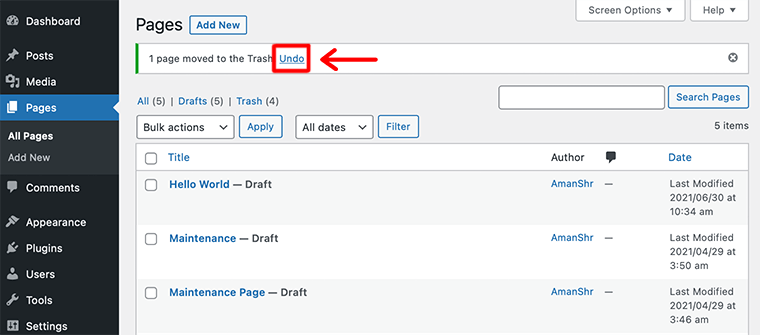
Now, you need to click on Undo for recovering the deleted pages or posts immediately. Once you do so, another pop-up notification will appear stating- 1 page restored from the Trash.
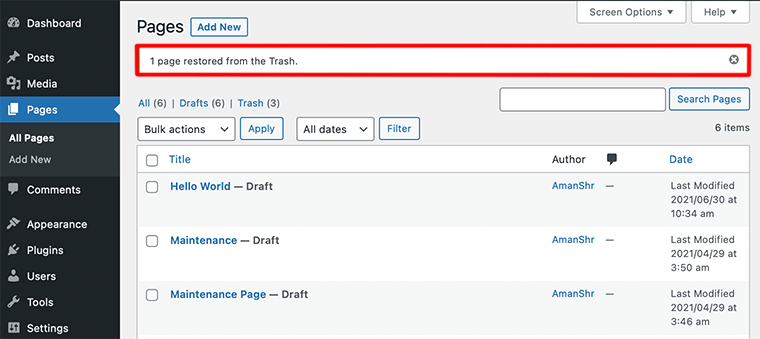
This is how you can recover deleted pages or posts in WordPress easily by using Undo option. This method only works immediately after deleting any page or post.
Before you try anything else if you miss the immediate recovering option, you should try this method first. It’s the easiest.
In WordPress, deleting an item usually sends it into the trash, from where you can retrieve it up to 30 days later. Thereafter, it will be permanently deleted.
To do so, simply navigate to Pages > All Pages in your admin area. For a complete list of the deleted pages during the last 30 days, switch to the ‘Trash‘ tab.
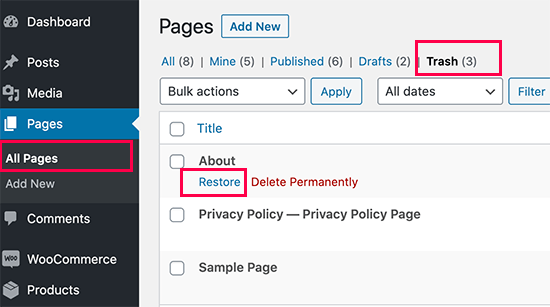
Take your mouse over the title of the page(s) you wish to restore, and you’ll see the option ‘Restore.’ If it’s listed there, you can simply select it.
If you want to restore several pages at once, select them and then choose ‘Restore’ from the Bulk Actions drop-down menu at the top.
In Pages > All Pages, you can now find the restored page.
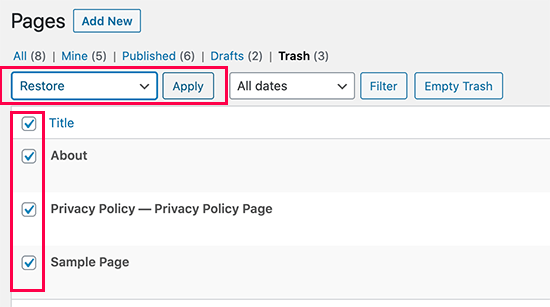
Is it possible to recover a deleted page from the trash if it is not listed there?
No worries, there are other ways to restore WordPress deleted pages.
Deleted blog posts and pages may not appear in the Trash folder at times. It becomes a little more difficult to recover deleted pages in WordPress in this case. This is where Google Cache comes in handy.
Google has the possibility of indexing your website at some point in time. For different purposes, the server stored it so that you can retrieve it later.
The next step is to learn how to restore deleted pages in WordPress using Google Cache.
Start by typing the site:www.example.com/name_of_the_post into the Google search box and then searching for it. Be sure to replace ‘example‘ with your website’s name before searching.

Then, if your post appears in the results, click on the arrow coming down beside your website title. When you select it, the Cached option appears. Then, choose Cached to locate your removed post or page.

After that, Google will provide a screenshot of your page as it appears on the specified date. As a result, if you think it is the one you want before deleting it, you may duplicate it and recreate the page.
To reconstruct the page, navigate to Pages > Add New and afterward create a new page, and you’ll get your deleted post again eventually.

This brings us to an end of the process of how you can recover deleted pages in WordPress using Cache. Please remember it only works on those pages or posts that you’ve published once and deleted as well.
As you know, once you install WoOCommerce, some important pages generate automatically- Cart, Checkout, Shop, Account Management, and more. All these pages help you to run your WooCommerce effectively.
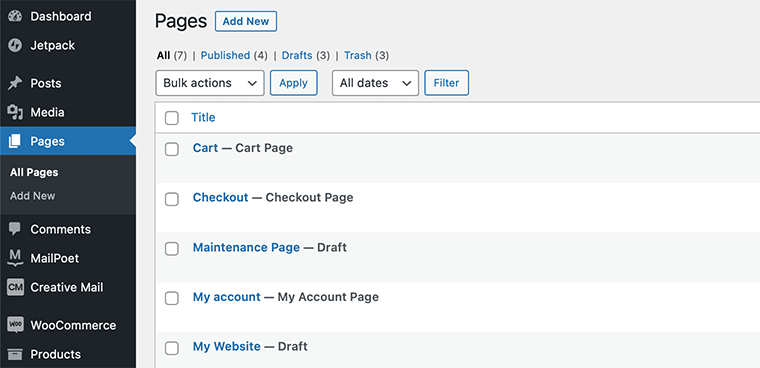
However, you may face a situation where you accidentally delete any WooCommerce pages and want to recover them. To do so, first, go to Trash and restore them, but if you can’t find the pages there then follow the below procedures to recover them.
In the first place, you need to create a similar page from your WordPress dashboard. For doing so, navigate to Pages > Add New, and start creating a new page.

Once you complete the page creation, tell WooCommerce to use this page instead. To do so, go to WooCommerce and then the Settings page. Once you reach here, switch to the Advanced tab from the right corner.
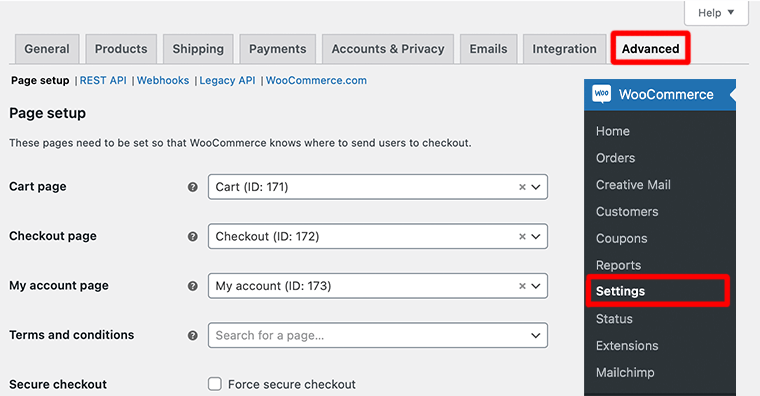
Here you can see all the WooCommerce pages that you’ve created so far beneath the page setup option. Following that, time to select the page that has been created in the Page Setup.
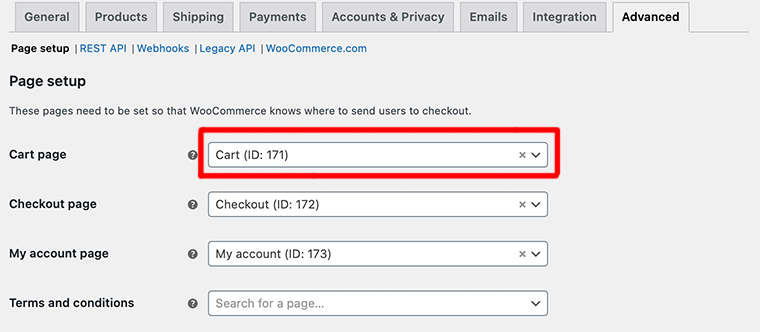
Nevertheless, for the Shop Page, you must first navigate to the Products page. Then choose whatever page you wish to utilize as your Shop page.
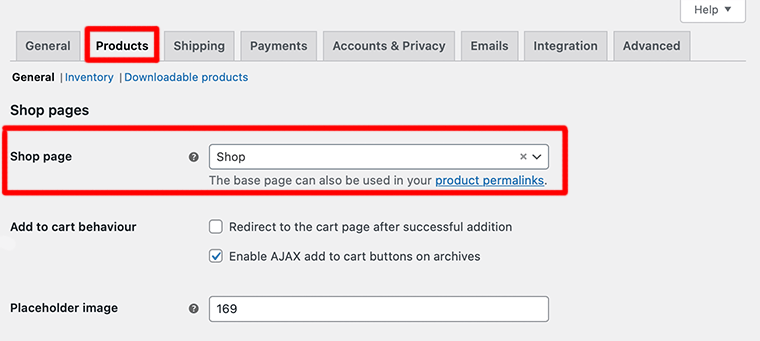
All things are completed here except one. And, this is the tiniest but most important one. That is, ensure to click on the Save Changes button so that all things you’ve done so far, changed successfully.
Isn’t it easy and pretty cool! So, here’s the whole process of how you can recover deleted WooCommerce pages in WordPress.
To sum up, follow the above-mentioned procedure to recover deleted pages in WordPress. Not only pages but also posts, and in particular WooCommerce pages also. If the simple Trash recovery does not works then go with any of the other-mentioned procedure to recover.
I hope you enjoyed the article. If so, please share your thoughts in the comments area below. Also, if you think this is worth sharing, please share it with your friends and family.
Stay connected with ThemeLooks by subscribing to our WordPress video tutorials on YouTube. We are also on Twitter, Facebook, and LinkedIn.